Inside the teahouses of Chengdu, China
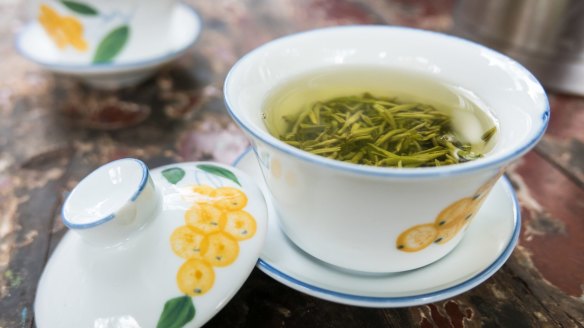
You haven't properly experienced Chengdu until you give up your sightseeing plans and prepare to do nothing. Settle into a slope-backed bamboo chair, stretch your feet out and let the afternoon drift away. Listen to the slosh of hot water being poured into teacups, the rustle of newspapers, the clack of mah-jong tiles and conversational murmur. Crack melon seeds. Slurp tea. Let lethargy take over in the cloudy, humid embrace of a Chengdu summer day.
In Chengdu teahouses, you slip sideways into a gentler time that ignores urban China's fast-paced, never-ending hustle. The Sichuan capital is booming too, yet has managed to retain the provincial character and slower pace, lost in many other Chinese cities. The Sichuanese are famously laid-back. Chengdu's teahouses survive despite the skyscrapers and shopping malls, a fragment of living culture in a China with a fetish for the future.
Fertile Sichuan has long been one of China's major tea-producing regions. Chengdu was noted for its teahouses as early as the ninth-century Tang Dynasty. For centuries, teahouses were places for entertainment as well as tea, with performances of storytelling, music and especially Sichuan opera. That's a fading art these days, but Yuelai Teahouse beside Jinjiang Theatre still hosts opera on Saturday afternoons.
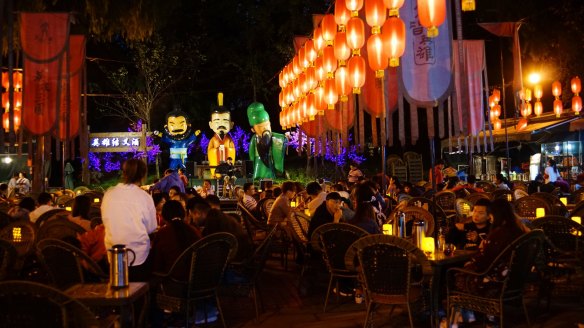
You'll find most of Chengdu's old-school teahouses in parks and temple compounds. The Sichuanese are sociable, so don't expect tranquillity. Before telephones and the internet, locals went to teahouses for conversation, news and entertainment. Now they go to escape the concrete, scroll through social media, talk, play mah-jong or cards, and refresh themselves between bouts of fan-dancing or martial-arts practise in the shrubbery.
Heming Teahouse in Renmin (People's) Park buzzes with morning retirees, lunchtime office workers and afternoon visitors sitting under red lanterns by a lotus pond. Students suck up steaming bowls of noodles. Professional ear cleaners move between the seats, tweezers and feathered probes at the ready. When the hubbub gets too much, move on to Shaocheng Teahouse in the same park. Patrons are older and quieter. They bring songbirds here on outings, hanging their cages in the branches of willow trees, and play mah-jong in a pavilion mossy with age.
As in all teahouses, the tea comes in individual sachets with a thermos of water. Maofeng green tea from Mount Emei, south of Chengdu, is the traditional favourite, infused with jasmine blossoms. Shake the loose leaves into your palm-sized cup, which comes with a saucer and a lid that both strains surface-floating leaves and keeps the tea warm.
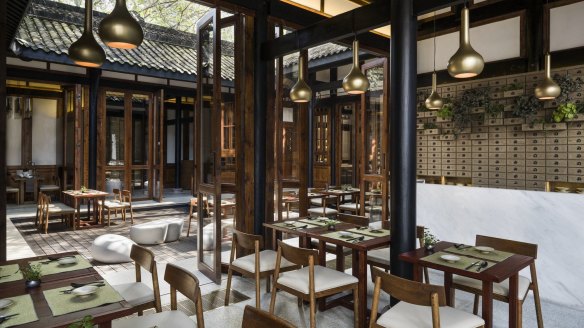
Don't let the water level in your cup get too low, since any bitterness from the tea leaves is concentrated at the bottom. You can top up your tea all afternoon, and have no obligation to buy anything else, though traditional accompaniments are pumpkin seeds and boiled peanuts.
A little further from the city centre, 17th-century Wangjiang Pavilion Park is notable for its high-rise wooden Qing Dynasty pavilion and collection of 150 bamboo varieties, some towering. It has a sprawling teahouse frequented by chess enthusiasts, hopeful members of dating clubs and students from the adjacent university. Its busiest section sits along the Jin River, but you can find more tranquil corners screened by bamboo around its ponds. Numerous pavilions make this a great spot for tea even on rainy days, when the bamboo turns a vivid lacquered green, frogs croak and rainwater gurgles down dragon-shaped gutters.
Another of the city's most popular teahouses is part of Wenshu (God of Wisdom) Monastery, one of China's most active temples, whose venerable courtyards are overlooked by some 400 Buddha statues. The raucous, tree-shaded original courtyard teahouse feels much more authentic than the more elegant, indoor version that has opened up beside it, in which more refined folk sip oolong tea from porcelain cups. In the city centre, recently renovated Daci Temple has another old-fashioned teahouse, despite being right in the middle of Chengdu's most fashionable retail district, Tai Koo Li.
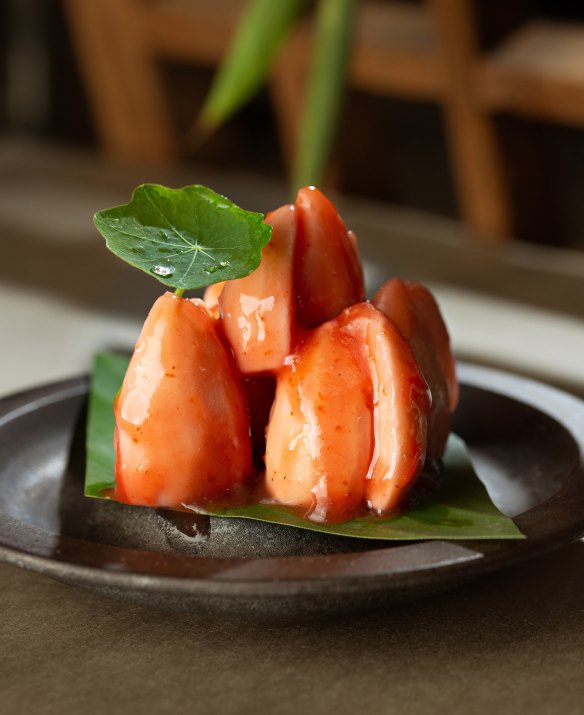
Chengdu's most traditional teahouses are no-frills, low-cost venues that stand out for their locations and convivial atmosphere. In more recent years, though, increasingly sophisticated teahouses have opened to appeal to younger, newly rich Chinese with a taste for superior teas and a more contemporary style. The best is Mi Xun Teahouse, also in Tai Koo Li, a redeveloped quarter whose low-rise contemporary architecture echoes old Chengdu rooflines and incorporates a half-dozen historic buildings.
Mi Xun – part of the very chic Temple House hotel – occupies a Qing Dynasty courtyard residence and presents an upmarket version of the Chengdu teahouse. The tea menu offers abundant contemporary varieties such as Gui Fei Oolong with its almost honey-like aroma, as well as more old-fashioned flavours such as Sichuan's Mixun autumn tea, whose osmanthus flowers provide a light, floral aftertaste. Accompanying vegetarian nibbles take teatime to a new level with marinated tofu cubes, lotus root in honey, red-bean cakes and iced cherry tomatoes.
Other "old" teahouses are found in unexpected places, such as the International Convention Centre, where Shunxing Ancient Teahouse is decorated with dragon pillars, wooden screens and pseudo-Qing flourishes. It's convincingly done, displays a great collection of old tea ware and related memorabilia, and provides the traditional music and acrobatic performances once common in teahouses. Tea is poured kung-fu style, with quite a flourish, from long-spouted kettles.
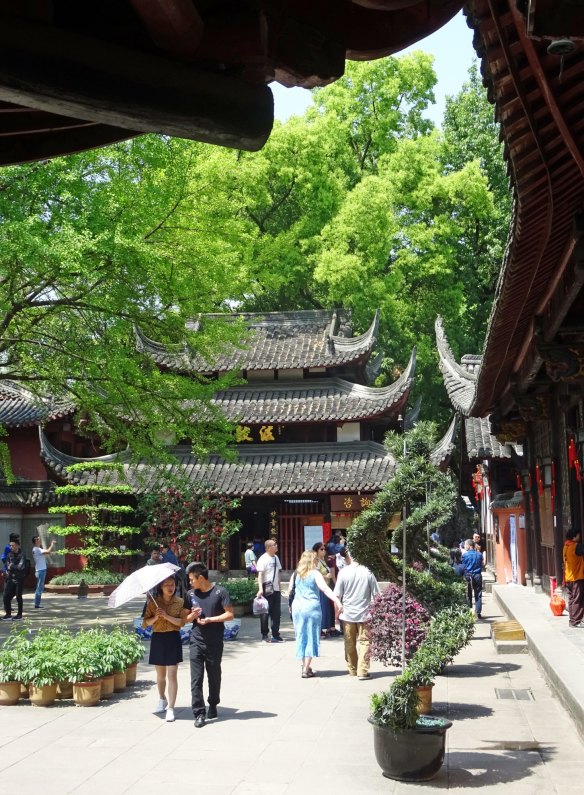
Some of Chengdu's best teahouses aren't just a re-creation of the old, however. The Kuanzhai Xiangzi (wide and narrow alleys) area, though touristy, has several good upmarket teahouses in the more modern style. Kuanyun Zhaiyu Teahouse occupies an original Sichuan courtyard residence reimagined with a sleek interior of white walls and oak floors. The courtyard, centred on a koi pond, is scattered with leather-clad chairs and covered in cantilevered glass.
Many newer teahouses are striking for Japanese and Taiwanese influences, as mainland Chinese relearn aspects of their tea culture suppressed during the Cultural Revolution. A good example is Hanyue Tea Aesthetics, a modern take on the two-storey tea pavilion in the city's burgeoning new southern district, whose walls are covered in Guanyin images and whose tea is served in silver Japanese pots. Zhu Ye (Bamboo Leaf) Teahouse, from notable interior designer Alan Chen, combines Zen decor, Buddha statues and contemporary artworks.
At Qingzhi Teahouse, the raked gravel and winding path of the courtyard appear distinctively Japanese, while the tea tables, cushions and wall fabrics are Taiwanese. Try its Menshan tea, a full-bodied Sichuan green tea with a silky texture and floral aroma, one of the oldest tea varieties in China. It's an expensive tea in a chic location, but the spirit of Chengdu remains the same. Kick back and let time drift away like the rising steam from your cup, and discover a less-rushed China of delicate pleasures.
Brian Johnston travelled at his own expense.
DETAILS
Yuelai Teahouse, 54 Huaxingzheng Road
Heming Teahouse and Shaocheng Teahouse, Renmin Park, 9 Citang Street
Wangjiang Pavilion Park, wangjianglou.com
Wenshu Monastery, 66 Wenshuyuan Street
Daci Temple, Tai Koo Li, soltklcd.com
Mi Xun Teahouse, thetemplehousehotel.com
Shunxing Ancient Teahouse, 258 Shawan Road
Kuanyun Zhaiyu Teahouse, 27 Kuan Lane
Hanyue Tea Aesthetics, 88 Tiexiangsi Shui Street
Zhu Ye Teahouse, 35 Shunan Road
Qingzhi Teahouse, 10 Jingsha Site Road
From our partners
Original URL: https://www.brisbanetimes.com.au/goodfood/eating-out/inside-the-teahouses-of-chengdu-china-20191022-h1j1fb.html
